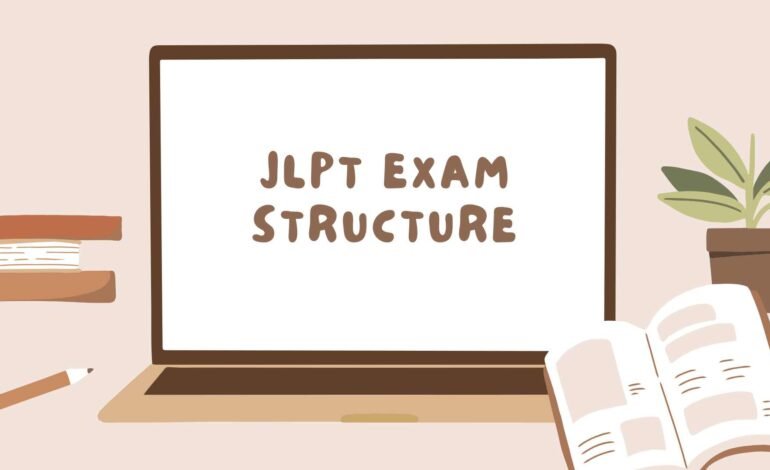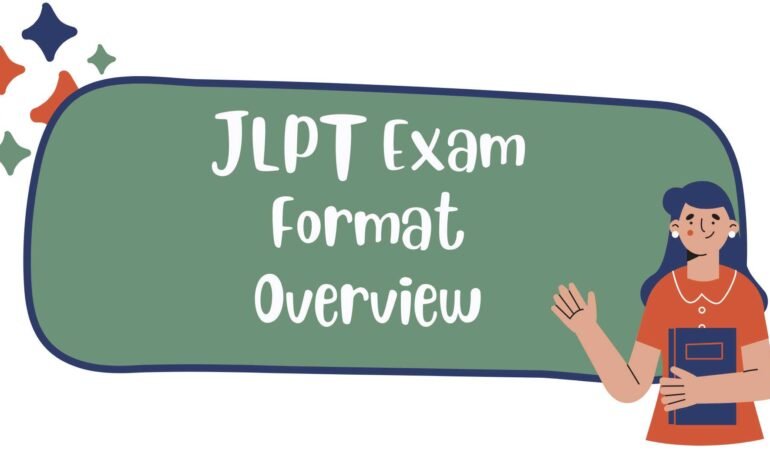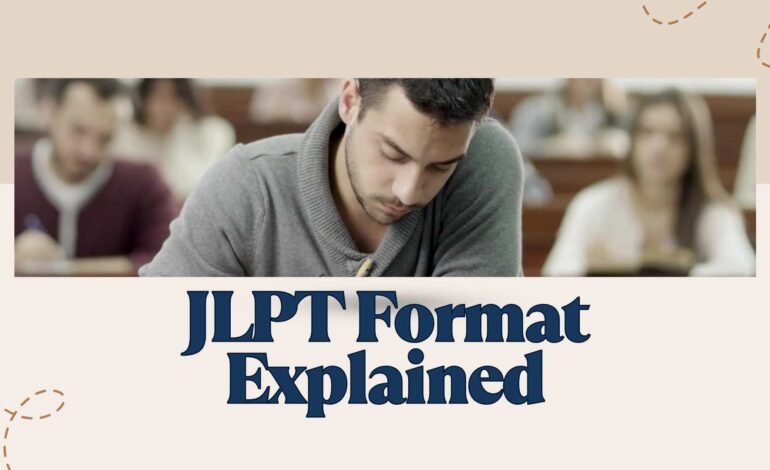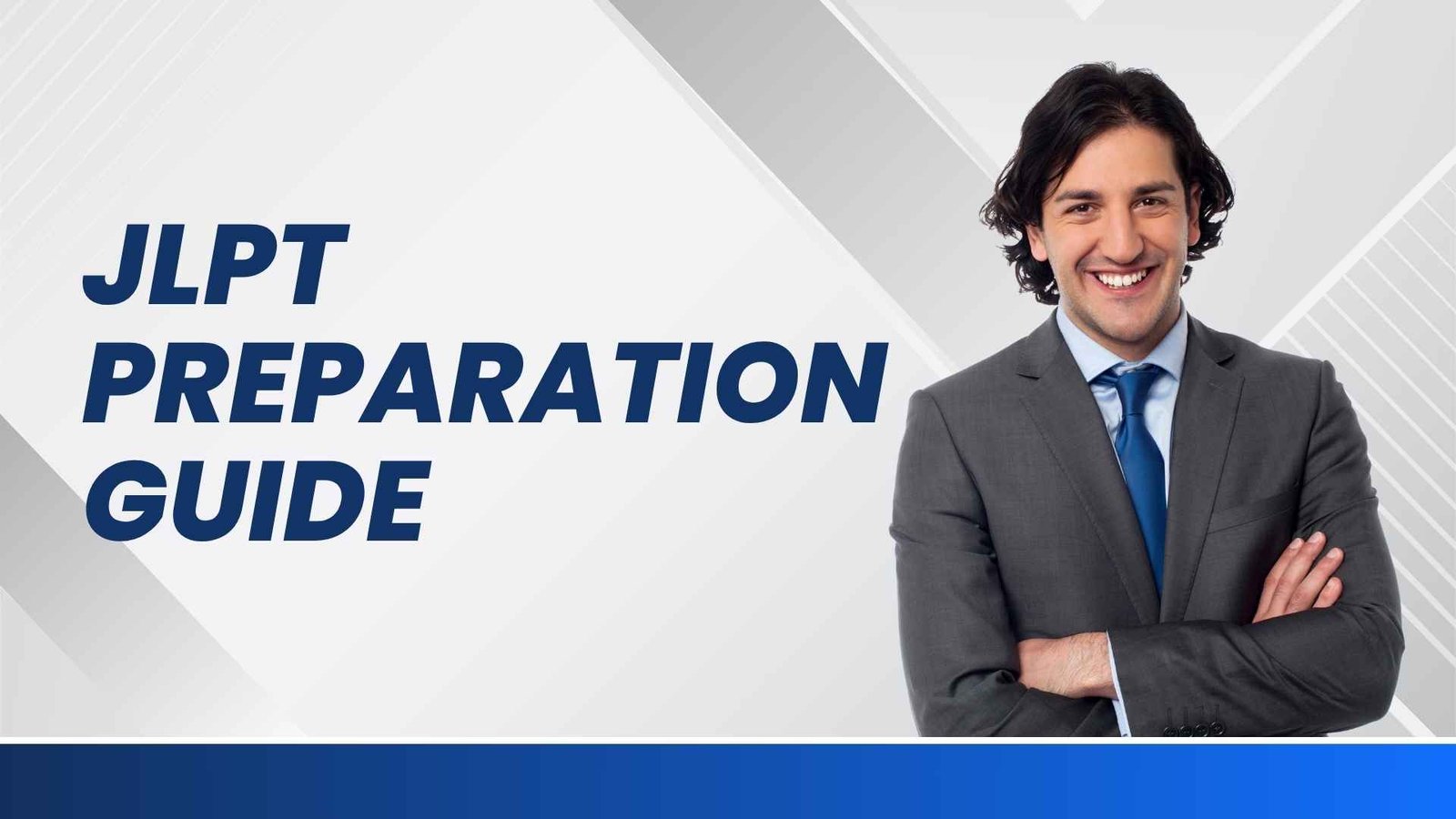If you’re planning to take the Japanese-Language Proficiency Test (JLPT), understanding the JLPT structure is essential for smart and strategic preparation. While many learners dive straight into vocabulary and grammar, not enough attention is given to the exam’s structure — and that can make or break your score.
In this detailed guide, we’ll cover everything you need to know about the JLPT Exam structure: the types of questions you’ll encounter, the weightage of each section, and how the structure evolves from N5 to N1. Whether you’re a first-timer or retaking the test for a better score, this article will help you get a clear roadmap of what to expect.
For official details on each section of the JLPT, refer to the JLPT Test Sections Guide.
What Is the JLPT Exam Structure?
The JLPT structure is consistent and standardized across all five levels from N5 (beginner) to N1 (advanced). It is carefully designed to assess your Japanese language proficiency through three main sections:
- Language Knowledge (Vocabulary + Grammar)
- Reading
- Listening
Each section plays a vital role in your final score. To pass any level of the JLPT, you must achieve two things:
Get a detailed overview of the test structure in our JLPT Exam Format guide.
- Meet the minimum score requirement in each section
- Reach the overall passing score
What sets the JLPT Exam structure apart from other language tests is its exclusively multiple-choice format — there are no speaking or writing sections. This makes it easier to prepare for, as you can focus on reading comprehension, vocabulary, and listening skills without worrying about written composition or spoken fluency during the exam.
Once you understand how the JLPT structure works, you can plan your preparation more efficiently and practice smarter, not just harder.

JLPT Question Types (Level-Wise)
The JLPT Exam structure adapts as you move from beginner to advanced levels, with question types increasing in complexity and realism. Here’s a clear breakdown of what you can expect at each level:
Explore the complete structure and sections by visiting our JLPT Test Format guide.
N5 & N4 – Beginner to Elementary Levels
The JLPT Exam structure at these levels focuses on foundational skills, making it ideal for new learners:
- Vocabulary Questions: Basic word meanings, reading simple kanji, and selecting correct word usage in context
- Grammar Questions: Fill-in-the-blank exercises, sentence reordering, and recognizing common patterns
- Reading: Short passages such as emails, signboards, schedules, and notices
- Listening: Simple conversations, daily instructions, and announcements spoken slowly and clearly
These levels test your ability to understand and respond to everyday Japanese used in familiar, practical situations.
Start your preparation journey with our all-inclusive JLPT 2025 Guide.
N3 – Intermediate Level
At this stage, the JLPT Exam structure begins to test your skills in more nuanced and real-world contexts:
- Vocabulary + Grammar: More complex sentence structures, context-based word meanings, and polite/formal usage
- Reading: Medium-length texts, such as advertisements, user manuals, and blog excerpts
- Listening: Conversations with natural speed, background noise, and multiple speakers
N3 serves as a bridge between the basic levels and the more advanced proficiency levels, introducing elements of context interpretation and reading between the lines.
To strengthen your comprehension skills, take a look at the JLPT Reading and Listening Sections breakdown.
N2 & N1 – Upper-Intermediate to Advanced Levels
The JLPT Exam structure at these levels becomes more challenging and tests your command of academic and professional Japanese:
- Vocabulary: Includes idiomatic expressions, compound verbs, business-related terms, and honorifics
- Grammar: Focuses on nuanced and rare grammar points, sentence connectors, and implied meanings
- Reading: Long-form materials including editorials, essays, research abstracts, and formal announcements
- Listening: Fast-paced dialogues, formal monologues, panel discussions, interviews, and debates — often without visual cues
At N2 and N1, you must demonstrate the ability to process dense and abstract information from various sources, mimicking real-life situations such as business meetings or academic lectures.
Ready to ace the test? Discover how to Pass JLPT in Your First Attempt.
How the JLPT Exam structure Evolves by Level
As you move up, the JLPT Exam structure:
- Introduces longer texts with increased reading time
- Tests listening comprehension under more natural and distracting conditions
- Requires a deeper understanding of grammar subtleties
- Demands strong vocabulary contextualization, not just recognition
This level-wise design ensures that each stage of the JLPT measures your true proficiency — from recognizing a train sign to understanding a research paper.
Curious about life after the test? Explore our insights in the Post‑JLPT Exams guide.
Section Weightage in JLPT Exam structure
Each section in the JLPT carries a different weight, but the total score across all levels is 180 points. Here’s a general weight distribution based on the JLPT structure:
| Section | N5 & N4 | N3, N2, N1 |
| Language Knowledge (Vocab + Grammar) | 60 pts | 60 pts |
| Reading | Included with Grammar | 60 pts |
| Listening | 60 pts | 60 pts |
Important: Even if you pass the overall total score, failing to meet the minimum requirement in one section can still result in a failed attempt.
That’s why understanding the JLPT Exam structure helps you allocate time and effort efficiently during your preparation.
Ready to register? Follow our step-by-step JLPT Exam Registration Guide for all the details.
Section Timing Based on JLPT Exam structure
Understanding the JLPT structure also means knowing how much time you’ll have at each level. As you progress from N5 to N1, the exam becomes longer, more complex, and more mentally demanding — especially during the reading and listening sections.
Here’s a quick breakdown of the total time allotted for each level:
- JLPT N5: 105 minutes
- JLPT N4: 125 minutes
- JLPT N3: 110 minutes
- JLPT N2: 155 minutes
- JLPT N1: 170 minutes
The JLPT structure is designed to challenge not only your language proficiency but also your time management and stamina. While beginner levels offer more time per question, advanced levels demand quicker thinking, stronger comprehension skills, and the ability to process information rapidly under pressure.
If you’re preparing for the JLPT, it’s crucial to simulate these time limits during practice exams to build your speed and focus — especially for the reading section, which tends to be the most time-intensive at higher levels.
Struggling with preparation? Check out our expert How to Prepare for JLPT guide.
Why Knowing the JLPT Exam structure Matters
Knowing the JLPT structure gives you a major advantage:
- You’ll know how many questions to expect in each section
- You can manage your time better during the exam
- You’ll identify your strengths and weaknesses faster
- You’ll avoid surprises on test day
Many test-takers score low not because of lack of knowledge but because they misjudged the JLPT structure and ran out of time or misunderstood the question flow.
Want clarity on each JLPT level’s content and expectations? Explore our JLPT Exam Levels and Content Guide.
Preparation Tips Based on JLPT Exam structure
To make the most of your preparation, align your strategy with the JLPT structure:
- Use official JLPT practice books that mirror the exam layout
- Practice timed mock tests to simulate real conditions
- Focus on both accuracy and speed, especially in reading and listening
- Break down your study plan by section weightage — don’t ignore grammar or listening if you’re good at reading
The more you prepare in line with the JLPT structure, the better your chances of passing with confidence.
Want a real feel for the test? Try our JLPT Exam Simulation and practice under exam conditions.
FAQs – JLPT Exam structure
Q1. Does the JLPT structure change every year?
No, the JLPT structure remains consistent, although slight adjustments in question difficulty may occur.
Q2. Are all JLPT levels based on the same structure?
Yes, the core format is the same — multiple choice, paper-based, and divided into Language Knowledge, Reading, and Listening.
Q3. Is reading and grammar one section or two?
In N5 and N4, grammar and reading are combined. From N3 onward, they are scored and structured separately but still part of one paper section.
Q4. Can I pass the JLPT if I fail one section?
No. According to the JLPT structure, you must pass each section’s minimum threshold along with the total score to clear the exam.
Q5. Which section is the most difficult in JLPT?
Most students find reading and listening challenging due to speed, vocabulary load, and inference-based questions—especially in N2 and N1.
Final Thoughts
Understanding the JLPT Exam structure is not just helpful — it’s essential for scoring well. From question types to section timing and weightage, every part of the exam is designed to test practical, real-world Japanese usage.
So don’t just study harder — study smarter with Team Language Services. Our expert-led JLPT preparation courses focus on mastering the exam structure, ensuring you walk into the test room with clarity, confidence, and a real chance at success.






